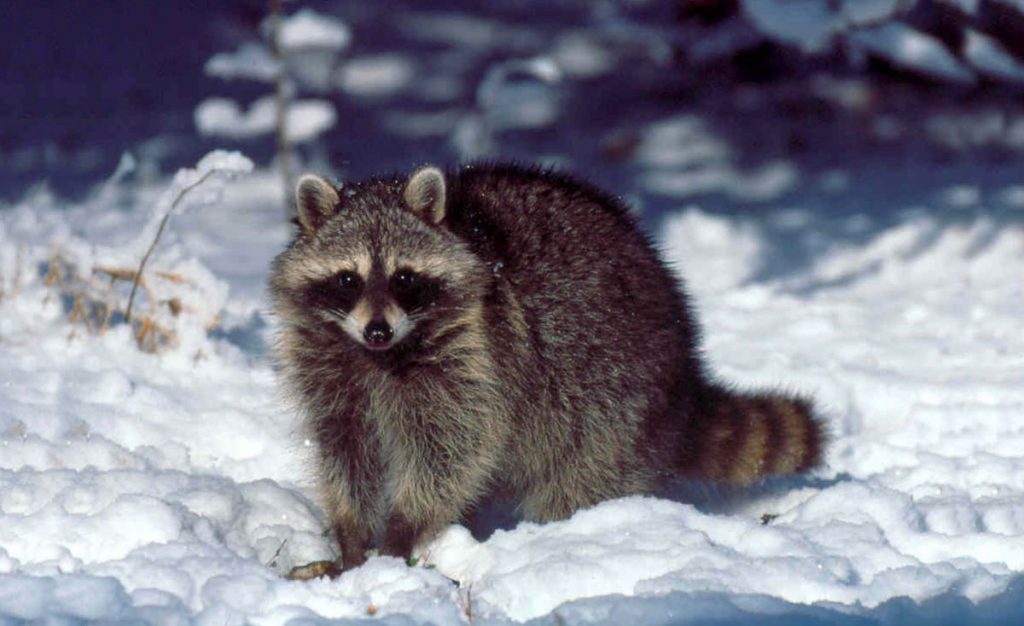
Photo: Bob Gress, IDNR
Learn more about raccoons in Illinois in OutdoorIllinois Journal:
Raccoons are mesopredators and they help control local insect and rodent populations. They also are important seed dispersers.
Raccoons have grayish-brown fur and are easily identified by their black eye mask and bushy, black-ringed tail. They are medium-sized mammals, approximately 26 to 39 inches in length (including the tail), and weigh 6 to 27 pounds depending on the animal’s age and condition. An average adult male weighs 15 to 20 pounds. Raccoons in northern Illinois tend to be larger than those in southern Illinois.
Sometimes you won’t see the raccoon, you’ll just hear it. Here is a clip of raccoon sounds.
For those unfamiliar with animal tracks, raccoon tracks may be easily confused with opossum tracks. Both animals have five toes on each foot. They also share a similar walking style that produces paired tracks. The front and opposite hind tracks will be side by side or close together. However, the tracks of the two animals are easy to tell apart if you know the characteristics of each animal.
Look at the hind track to distinguish between the two animals. The hind track of an opossum will resemble a baby’s handprint. The inner toes on an opossum’s hind foot are thumb-like and lack claws. Raccoons have claws on all of their toes and walk flat-footed.
Raccoon scat is often blunt on the ends and the remains of seeds or other food items will be visible. Their droppings can usually be distinguished from opossum or fox droppings by the blunt ends of the droppings. Droppings of many similar size mammals are more pointed or rounded. Raccoons often have favored latrine areas so piles of scat may indicate the presence of raccoons.
Raccoons are found in every county in Illinois and are abundant throughout the state. The number of raccoons in Illinois has increased dramatically since the 1930s. Researchers estimate that there are more raccoons in Illinois today than there were when the first European settlers arrived. It is common to have populations of 9 to 45 raccoons per square mile in Illinois. Fall population estimates of 98 to 101 raccoons per square mile have been recorded for parts of Cook, Kane and McHenry counties.
Raccoons are nocturnal and forage for food at night. During the day they usually remain close to their den. But in urban areas, it isn’t uncommon to see raccoons out during the day.
Raccoons do not hibernate, but will stay in their den for several days if the winter weather is severe. During the winter months, or in areas with large populations of raccoons and limited shelter, raccoons may den with several other individuals.
Raccoons are excellent climbers and swim well. They typically try to run away or climb a nearby tree if threatened. However, a raccoon that is cornered will growl and may try to defend itself.
Raccoons are mesopredators and help control insect and rodent populations. They also are important seed dispersers. When raccoon populations get too large, they can negatively impact bird populations by feeding on eggs and nestlings.
Raccoons do not generally pose a public health risk. However, they can be carriers of rabies, a disease that is fatal to humans if not treated quickly. Therefore, care should be taken not to come into contact with raccoons. Raccoons may also be carriers of canine distemper and parvovirus, which can infect domestic cats and dogs. However, neither disease has had any human health implications reported in Illinois.
Raccoons may also be infected by several kinds of parasites, including tapeworm and roundworm. The raccoon roundworm is an Ascarid nematode and is infectious to humans. People can become infected when they accidentally ingest roundworm eggs that are shed in raccoon feces. Washing hands in hot, soapy water can prevent infection as can wearing gloves while gardening.
The raccoon is a generalist species and can be found nearly wherever food, water and shelter are available. Historically raccoons lived in wooded river bottoms and were less abundant in the uplands. Today raccoons can be found living in urban and suburban areas and in areas with a mixture of farmland and woodland. Raccoons are less common in grasslands or in agricultural areas with few trees since these areas provide fewer sources of shelter. Raccoons normally den in hollow trees or abandoned woodchuck or fox burrows. However, they will readily use barns, chimneys, attics or the space under decks and porches for shelter if they can gain access. They have several den sites in their home range.
Home ranges of urban and suburban raccoons are typically smaller than those of rural raccoons because of the concentration of available water, food and shelter in many urban areas. Researchers have documented raccoon home ranges of 53 to 92 acres in suburban areas of northern Illinois. The size of a home range varies based on habitat quality, season, population density, and the sex and age of the raccoon. Males typically have larger home ranges than females since they often travel during the breeding season to search for mates.
Raccoons are omnivores, meaning that they eat both plant and animal material. They are opportunistic feeders and their diet varies based upon what is available in their environment. Raccoons will eat insects, crayfish, fish, turtles, voles, mice, birds and eggs. They also eat acorns, nuts, fruits, berries, corn, other grains, grasses and sedges. In urban areas, they will supplement their diet with garbage and pet food.
Raccoons are promiscuous breeders and mate with several individuals. Breeding occurs from January through March with the peak occurring in February. Gestation is approximately 63 days.
The female will raise one liter of three to four young each year. Young raccoons begin to venture outside the den for short periods of time when they are a month old, but do not leave the den until they are weaned (between two and three months of age). Though able to care for themselves, young raccoons typically stay near the female throughout the fall and winter, waiting until the following spring to disperse.
The average raccoon has a lifespan of three to five years. Dogs, coyotes, foxes, bobcats and great horned owls can take young raccoons. Adult raccoons are more likely to be killed by automobiles or disease than by predators. The oldest raccoon in a study conducted in west-central Illinois was 11 years of age.
Raccoons are most likely to cause problems by denning under decks or porches or inside attics or chimneys, raiding garbage cans, digging up lawns or taking fruit or vegetables from gardens.
If a raccoon is causing property damage, and all other control measures have failed, the animal may need to be removed. Removal should be used as a last resort.
If you do not want to remove the animal yourself, you can call a nuisance wildlife control operator (NWCO) to trap and remove the raccoon for you. NWCOs will charge a fee for this service.
If you want to remove the raccoon yourself, you will need a nuisance animal removal permit from an Illinois Department of Natural Resources District Wildlife Biologist before you trap the racoon. The biologist can provide information on options for resolving problems.
The IDNR Furbearers page provides more information about hunting and trapping Furbearers. The Illinois Trapper Education Manual provides guidance on the best management practices for trapping. Trap size recommendations for raccoons is found on page 94, see: TrapperEducationManual
Current hunting and trapping seasons can be found in the Illinois Digest of Hunting and Trapping Regulations or in the Legal Status section below.
Recreational fur-trapping (and hunting when/where allowed) is the preferred method to deal with nuisance furbearer issues. Trapping can help control the local population of animals and, in some cases, reduce the number of nuisance complaints and the damage that some species can cause. The Illinois Department of Natural Resources offers a lengthy trapping season (3 months, in some cases 4.5 months). Legal trapping can occur 100 yards from an occupied dwelling without permission of the occupants, closer with permission as long as there are no municipal ordinances that prohibit trapping.
In Illinois, raccoons are protected as a Furbearer. Raccoons in urban areas that cause property damage or present a threat to public health or safety may be removed if an Illinois Department of Natural Resources District Wildlife Biologist issues a nuisance animal removal permit.
In rural areas, a hunting or trapping license is needed to harvest a raccoon. In rural areas, there is no limit to the number of raccoons that an individual with a hunting or trapping license may take. The statewide raccoon hunting season is from mid-November through mid-February. Raccoons may be trapped from mid-November through mid-February. IDNR biologists monitor the number of raccoons in Illinois to ensure that hunting and trapping do not negatively impact the population. See the Illinois Digest of Hunting and Trapping Regulations for hunting and trapping season dates and current regulations.
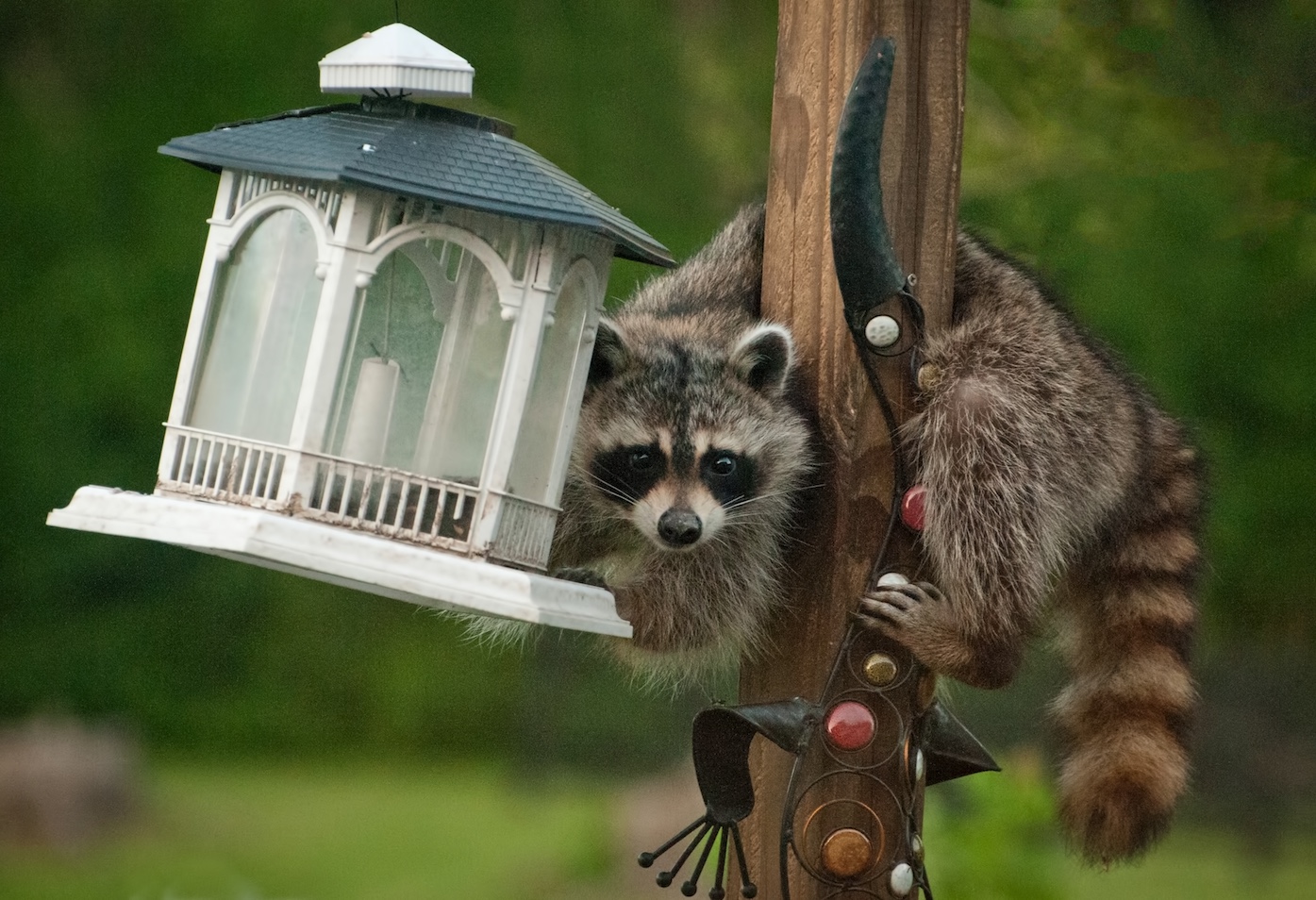
Photo: Illinois Department of Natural Resources
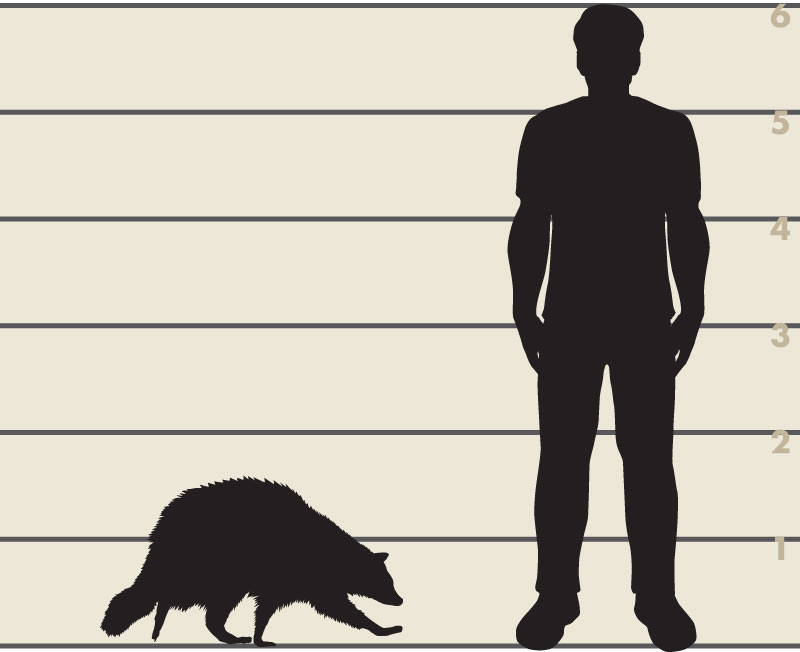
Illustrator: Lynn Smith
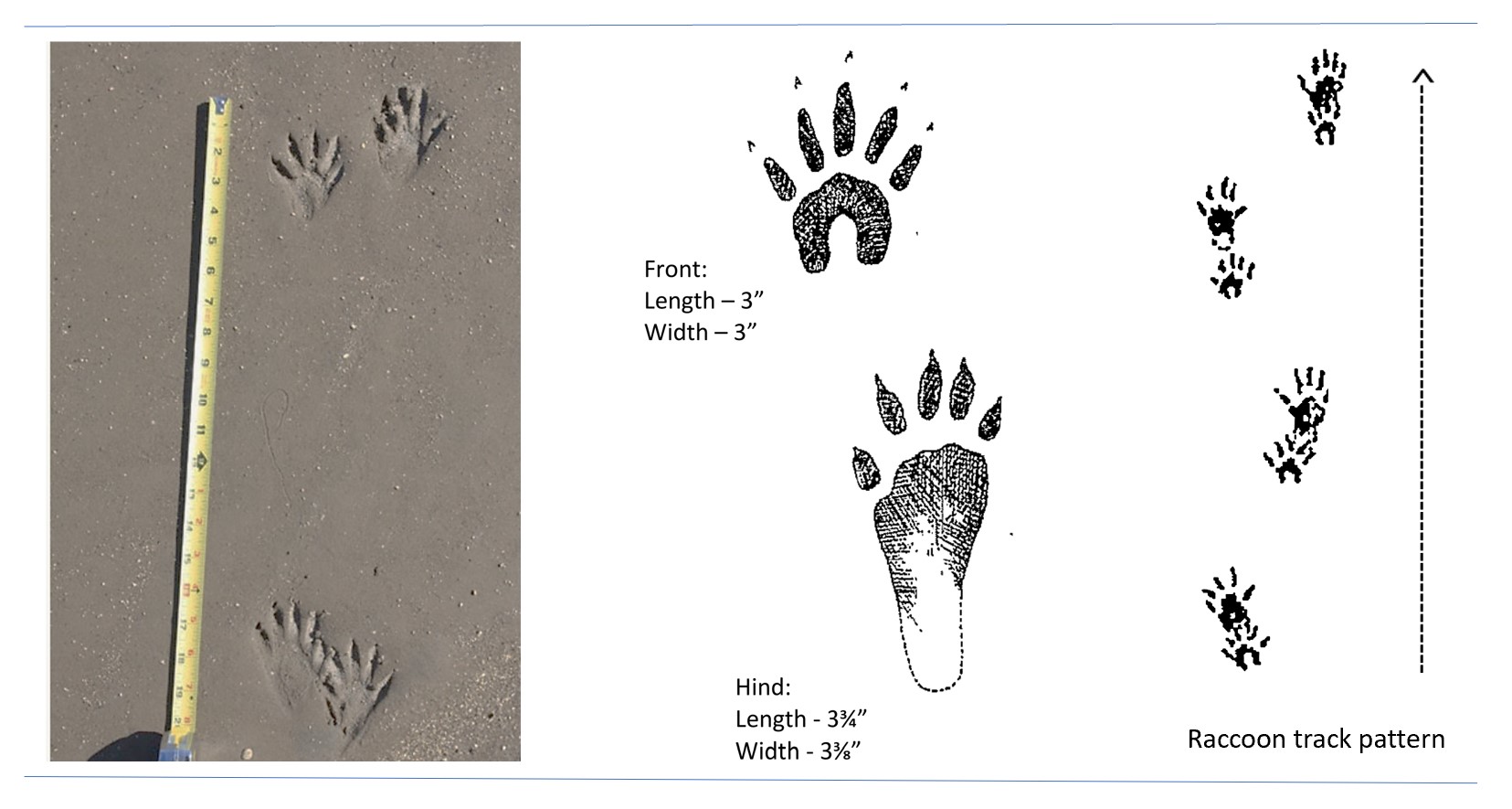
Photo: Terry Kem and Illustrations: Dan Goodman
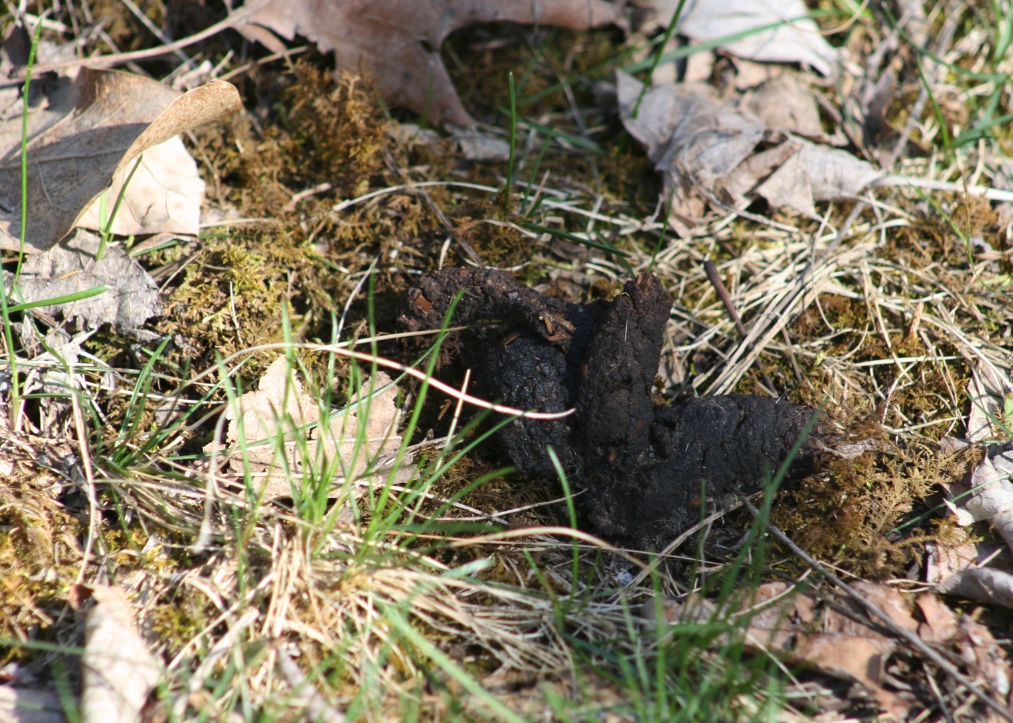
Photo: IDNR
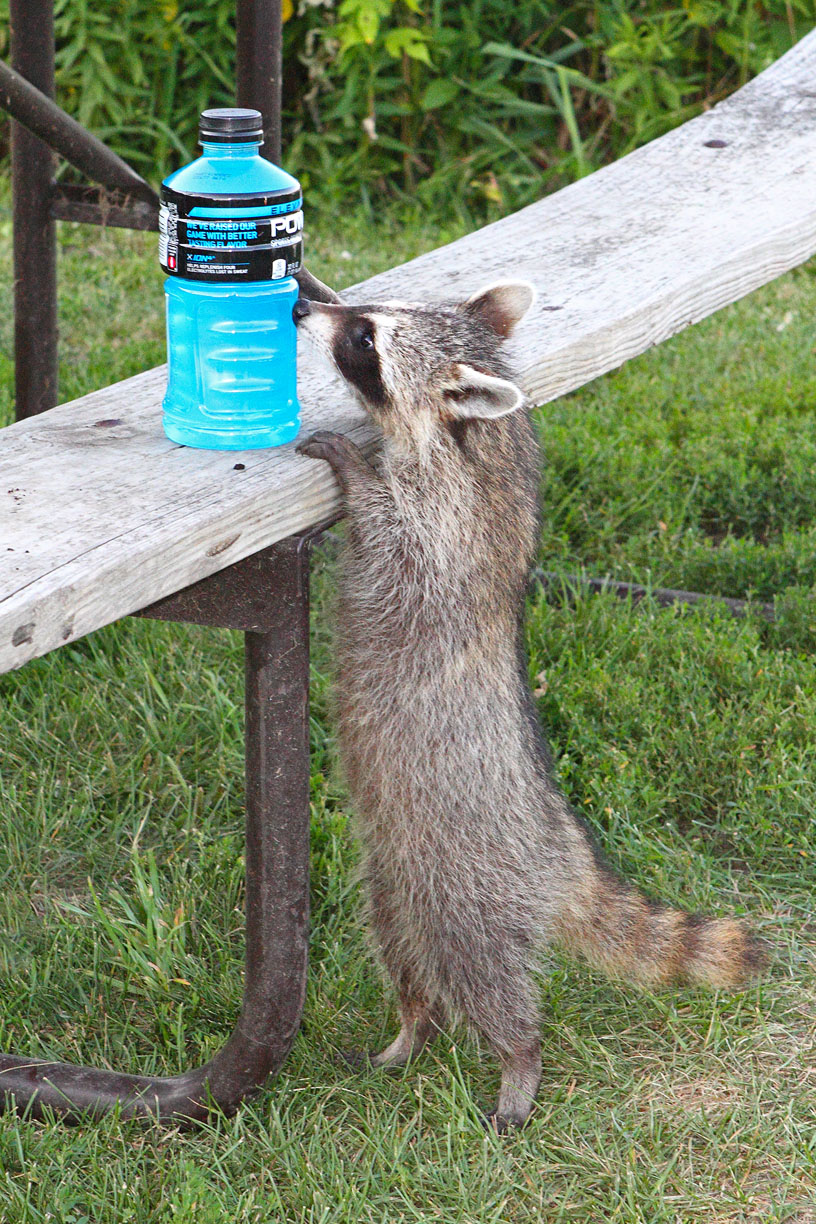
Photo: Gordon Garcia
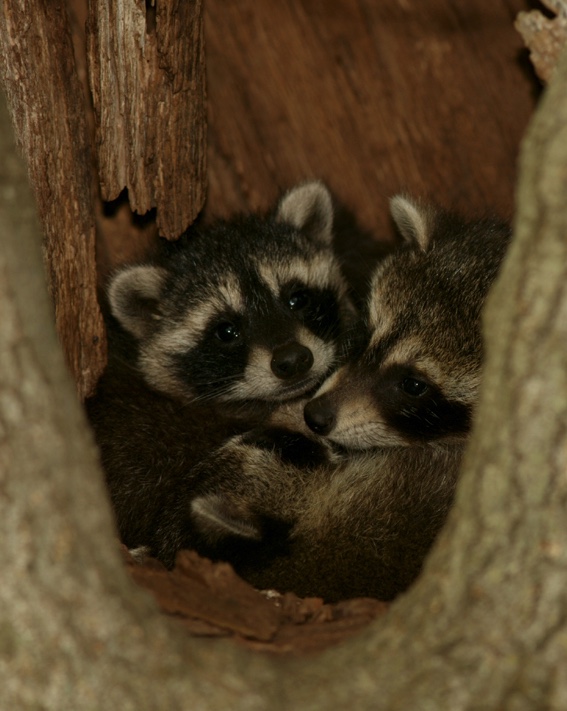
Photo: Adele Hodde, IDNR
The Wildlife Illinois website was authorized by the Illinois Department of Natural Resources (IDNR) in partial fulfillment of project W-147-T. The website was developed by the National Great Rivers Research and Education Center, 2wav, and the IDNR in partnership with the United States Department of Agriculture Animal and Plant Health Inspection Service Wildlife Services and University of Illinois Extension to provide research-based information about how to coexist with Illinois wildlife.